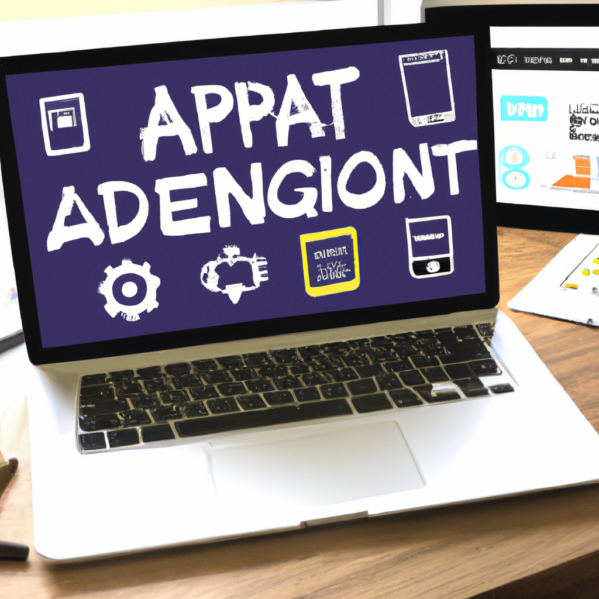Mobile app development refers to the process of creating software applications specifically designed to run on mobile devices such as smartphones and tablets. These applications can be developed for various platforms, including iOS (Apple devices) and Android (devices from multiple manufacturers). Android and iOS apps can be developed using different programming languages and frameworks. With the ever-increasing popularity of smartphones and tablets, mobile apps have become an integral part of our daily lives, enabling us to access information, communicate, and perform a wide array of tasks with just a few taps on the screen.
From social media and gaming to productivity tools and e-commerce platforms, mobile apps have revolutionized the way we interact with technology. The process of mobile app development involves designing, coding, testing, and deploying applications that are optimized for specific mobile operating systems, such as iOS and Android, ensuring a seamless user experience. It requires a combination of creativity, technical expertise, and an understanding of user needs to develop apps that are visually appealing, functional, and intuitive. Some of the languages used for mobile app development are Java, Kotlin, and Flutter like flameworks.
Some key requirements to consider when building an app:
- Concept and Purpose: Clearly define the concept and purpose of your app. Identify the problem it solves, the target audience, and the unique value it offers. This will serve as the foundation for your app development process.
- Computers and other equipment: of course, laptops are one of the basic requirements for building an app to do all the coding work on it. Laptops under 50000 or laptops under 55000 are best for Mobile app development work.
- Platform Selection: Decide on the platform(s) you want to build your app for. The two primary platforms are iOS (Apple devices) and Android (devices from multiple manufacturers). Consider factors such as your target audience, market share, and development resources available.
- User Experience (UX) Design: Create a user-friendly and intuitive design that aligns with your app’s purpose and target audience. Develop wireframes and prototypes to visualize the app’s layout, navigation, and interactions.
- Technical Requirements: Determine the technical requirements based on your app’s functionalities. Consider factors such as the programming language, frameworks, libraries, and tools required for development. For example, iOS apps are typically built using Swift or Objective-C, while Android apps use Java or Kotlin.
- Backend Development: Plan and develop the backend infrastructure to handle data storage, user authentication, server-side logic, and API integration. This may involve setting up servers, databases, and cloud services.
Trends in Mobile App development in 2023
- Artificial intelligence
- Ed-tech
- Internet of Things
- Saas
- Augmented reality
1. Artificial intelligence
With the growing use of artificial intelligence, there is a growth in demand for AI apps. Within the next few years AI with be implemented in every sector from education to e-commerce and everywhere. For app developers, it’s a lucrative opportunity to develop an app based on AI. These apps leverage the power of AI algorithms and machine learning techniques to analyze data, recognize patterns, and make informed decisions. With AI apps, our smartphones and tablets are no longer just tools for communication and entertainment but intelligent assistants that can understand, learn, and adapt to our needs. From virtual personal assistants and language translation to image recognition and predictive analytics, AI apps have transformed the way we interact with technology and opened up a world of possibilities. The fascinating realm of AI apps, where machines emulate human intelligence, enables us to accomplish tasks more efficiently and enhance our daily lives with smarter, more personalized experiences, and complete work within less time.
2. Ed-tech
In India, there are around 4 crore students pursuing different degrees. The rise of EdTech apps has revolutionized the education landscape, bringing innovative and engaging learning experiences to students of all ages. EdTech, short for educational technology, refers to the integration of technology into educational practices to enhance teaching and learning. These apps leverage the power of digital platforms, interactive content, and personalized learning approaches to make education more accessible, interactive, and effective. With the rapid advancement of technology, EdTech apps have gained immense popularity, offering a wide range of educational resources, interactive lessons, virtual classrooms, and collaborative tools. They enable students to learn at their own pace, access educational content anytime and anywhere, and receive personalized feedback and recommendations. EdTech apps have also empowered educators by providing them with tools for lesson planning, assessment, and student monitoring. Some of the most used Ed-tech apps in India are Coursera, Google Classroom, etc.
3. Internet of Things
The underlying idea behind IoT is to enhance the functionality and capabilities of objects by integrating them into a networked ecosystem. These objects, often referred to as “smart” devices, can range from common household items like thermostats, lights, and appliances to industrial machinery, vehicles, and even wearable devices. IoT apps allow you to access and control devices with your mobile phones from any remote location like camera surveillance systems and lighting sensors, Remote patient monitoring is one of the very important uses of IoT in the healthcare sector. IoT devices are equipped with sensors and actuators that collect data and perform actions based on that data. The data collected by these devices can be shared and analyzed in real time, providing valuable insights and enabling automation, optimization, and smarter decision-making.
4. SAAS apps
SaaS, or Software as a Service, refers to a software licensing and delivery model in which software applications are provided to users over the Internet. With SaaS, users do not need to install or maintain the software on their own computers or servers. Instead, they access the application through a web browser or dedicated client, and the software provider handles all aspects of software maintenance, updates, and security. There are various types of SaaS businesses that cater to different industries and customer needs like Customer Relationship Management (CRM), Human resource management tools, Communication, Collaboration, etc. SaaS applications are accessible from anywhere with an internet connection. Users can access the software and their data using a web browser or dedicated client, eliminating the need for local installations. This accessibility enables remote work, collaboration, and seamless access across multiple devices and this is what makes them best for app development.
5. Augmented Reality (AR)
In 2022, One of the biggest social media company Facebook (now Meta) changed its company name to plan to create a metaverse — a virtual world in which consumers spend increasing parts of their lives, based on AI and virtual reality (VR) technology and Augmented Reality. While AR is an important component of the metaverse concept, Facebook’s vision encompasses more than just a single AR app. The key distinguishing factor of AR apps is the ability to seamlessly integrate virtual content into the real world in real time. This enables users to interact with the virtual elements, such as manipulating 3D objects, exploring virtual environments, or accessing additional information by simply pointing their device’s camera at the relevant objects or locations.
AR apps have a wide range of applications across industries, including gaming, entertainment, education, retail, tourism, architecture, healthcare, and more. They can be used for virtual try-ons, interactive product demonstrations, educational simulations, navigation and wayfinding, remote collaboration, and enhancing real-time visualizations, among many other possibilities.
With the advancement of AR technologies and the increasing prevalence of AR-enabled devices, AR apps are becoming more sophisticated, accessible, and widely adopted. They offer users unique and engaging experiences that bridge the gap between the digital and physical worlds, creating new opportunities for interaction, entertainment, and practical applications.
Conclusion
These are a few of the new opportunities in the large world of the internet and technology. As technology continues to advance, mobile app development will continue to evolve and shape the way we live, work, and interact with our surroundings. These trends demonstrate the immense potential of mobile apps to enhance productivity, learning, communication, and entertainment. Whether it’s leveraging AI algorithms, creating interactive learning platforms, harnessing the power of IoT, delivering software through the cloud, or immersing users in augmented realities, mobile app development in 2023 promises exciting possibilities and transformative experiences for users worldwide.


